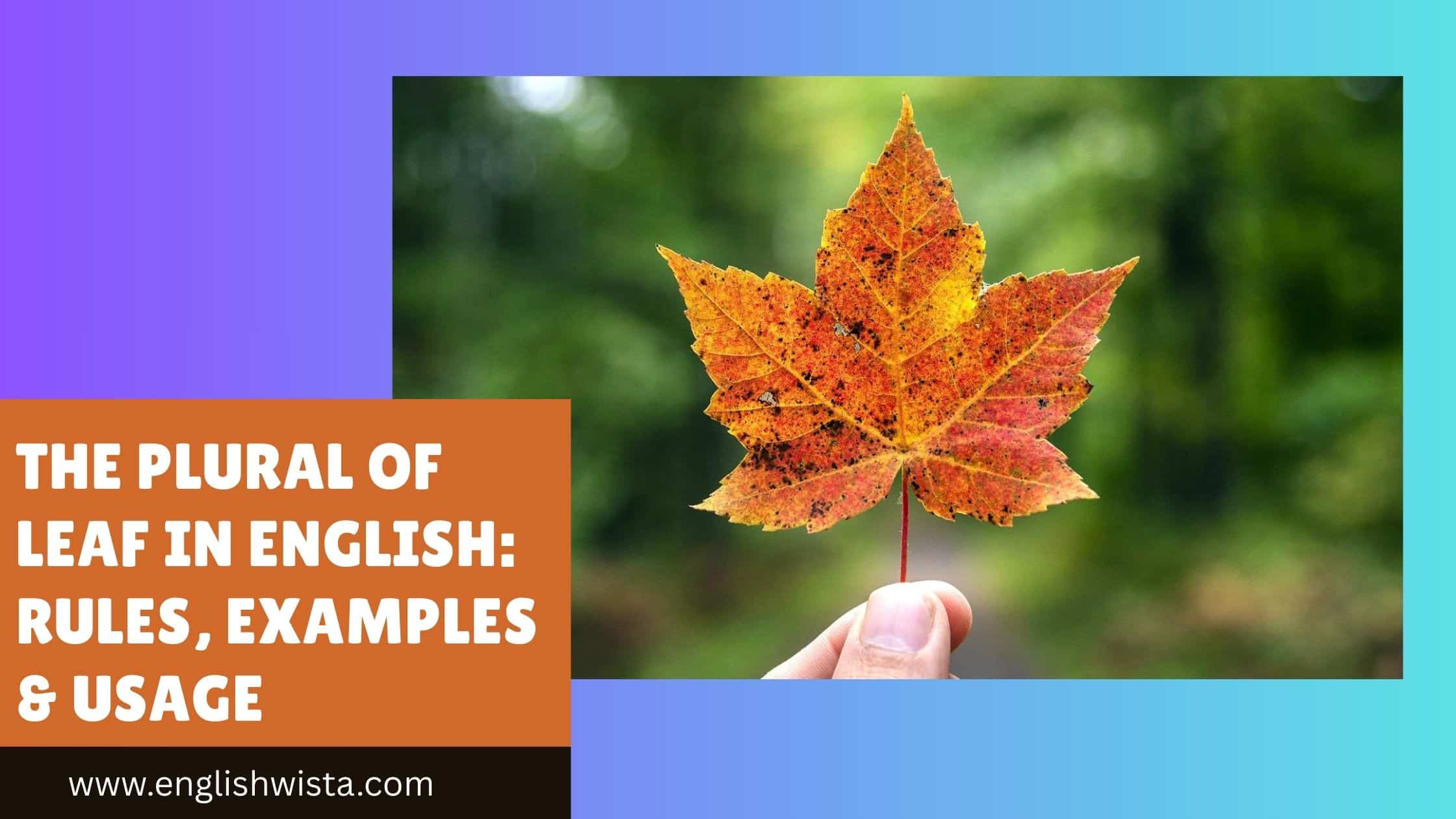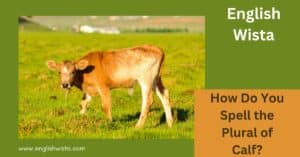Imagine walking through a park on a cool autumn afternoon. You look down and see the ground covered in beautiful colors reds, oranges, and yellows. What do you see? You see many leaves.
Now pause for a second. Why do we say leaves and not leafs? After all, many words in English just add an -s at the end to form the plural. One cat becomes two cats. One book becomes two books. Simple, right? But with the word leaf, something a little different happens.
In this article, we’re going to take a fun and friendly journey into the plural of leaf. We’ll keep it simple, clear, and approachable. By the end, you’ll understand not only what the plural of leaf is, but also why it looks the way it does, how to use it in sentences, and even some cool facts about the word itself.
So, let’s dive in.
What is the Plural of Leaf?
The short and simple answer is: the plural of leaf is leaves.
That’s right when you’re talking about more than one leaf, you don’t say “leafs.” Instead, you change the f at the end into ves.
So:
- One leaf
- Two leaves
- Many leaves
This little change might feel strange at first, but it’s actually quite common in English.
Why Does Leaf Become Leaves?
English has a special rule for some words that end with the letters -f or -fe. Instead of adding just an -s, we replace the f or fe with ves.
Here are some common examples:
- knife → knives
- wife → wives
- life → lives
- shelf → shelves
- wolf → wolves
So, leaf → leaves follows the same pattern.
Think of it this way: the sound of -ves flows more smoothly when we’re talking about more than one. Saying “leafs” feels a little awkward on the tongue, while “leaves” sounds natural and easier to say.
Is Leafs Ever Correct?
You might be wondering: is “leafs” ever used at all? The answer is yes but only in very special cases.
For example, “Leafs” is the name of a professional ice hockey team in Canada: the Toronto Maple Leafs. They don’t use “Leaves” because that would sound odd as a team name. Sports teams often break grammar rules for style, tradition, or branding.
But in regular English writing or speaking, the correct plural of leaf is always leaves.
Examples in Everyday Sentences
Let’s practice using leaf and leaves in real sentences.
- In spring, a tree grows a fresh green leaf.
- By autumn, the tree has lost most of its leaves.
- She picked up a dry leaf and pressed it in her notebook.
- The children jumped into a pile of leaves in the yard.
- A single leaf floated on the surface of the pond.
- The wind blew hundreds of leaves down the street.
Notice how natural it feels to say leaves instead of “leafs.”
A Simple Definition of Leaf
To make sure we’re all on the same page, let’s define the word leaf in simple terms.
A leaf is the flat, usually green part of a plant that grows from its stem or branch. Leaves are important because they help plants make food through a process called photosynthesis. They also give us shade, beauty, and even fresh air to breathe.
So, whenever you see trees, plants, or flowers, you’ll also see their leaves.
Where Does the Word Leaf Come From?
Words often have fascinating histories, and leaf is no exception.
The word comes from Old English, where it was spelled “lēaf.” In older times, it meant not only the leaf of a plant but also things like pages of a book or even sheets of metal. This connection makes sense if you think about it just like a tree has leaves, a book has “leaves” of paper.
That’s why even today, you might hear someone say “a leaf of paper,” though we usually just say “a sheet of paper” now.
Other Words That Work Like Leaf
As we saw earlier, leaf → leaves isn’t alone. Let’s take a closer look at other words that change from -f to -ves.
- calf → calves
- elf → elves
- thief → thieves
- half → halves
This group of words can be tricky for learners of English because it doesn’t always follow the basic “just add -s” rule. But once you notice the pattern, it gets easier.
Here’s a fun tip: if a word ends in -f and it’s something you can imagine being more than one of, chances are it changes to -ves in the plural.
Are There Exceptions to the Rule?
Yes, of course! English loves exceptions. Not all words ending in -f change to -ves. Some just take the regular -s.
For example:
- chief → chiefs
- roof → roofs
- belief → beliefs
So, while “leaf” becomes “leaves,” not every -f word does the same. The best way to learn is to practice and get familiar with the common ones.
Real-Life Situations for Using Leaves
Now let’s make things practical. Here are some everyday situations where you might use the word leaves:
- In the garden: “The tomato plant has big green leaves.”
- In school science class: “Leaves make food for the plant through photosynthesis.”
- In autumn: “The ground is covered with colorful leaves.”
- In art: “She painted a tree with golden leaves.”
- In cooking: “Add a few fresh basil leaves to the pasta sauce.”
See how versatile this word is? From nature to food to art, leaves show up everywhere.
Fun Facts About Leaves
Let’s add a little extra fun to our learning.
- Leaves are food factories: They use sunlight, water, and carbon dioxide to make energy for plants. Without leaves, many plants couldn’t survive.
- Leaves can be symbols: A four-leaf clover is considered lucky. The maple leaf is on the Canadian flag.
- Leaves are seasonal stars: In many countries, autumn is famous for the brilliant colors of falling leaves.
- Not all leaves are green: Some plants have purple, red, or even striped leaves.
And here’s a language twist: the phrase “to turn over a new leaf” means to start fresh or make a positive change in your life.
Quick Recap
We’ve covered a lot, so let’s go over the key points again:
- The plural of leaf is leaves.
- This happens because many words ending in -f change to -ves in the plural.
- “Leafs” is only correct in special names, like the Toronto Maple Leafs hockey team.
- In everyday English, always use leaves.
- Leaves are everywhere in nature, art, food, and even in language expressions.
Conclusion: Keeping It Simple
Learning English plurals can feel tricky at first, especially with words like leaf that don’t follow the regular “just add -s” rule. But once you understand the simple pattern leaf → leaves it becomes easy.
Next time you walk through a park or garden, notice the leaves around you. Think about the word, its history, and how it connects language with nature. And remember, every time you use leaves correctly, you’re not just practicing grammar you’re also celebrating one of the most beautiful parts of the natural world.
So here’s your friendly takeaway: one leaf, many leaves. Simple, clear, and ready to use in everyday life.



